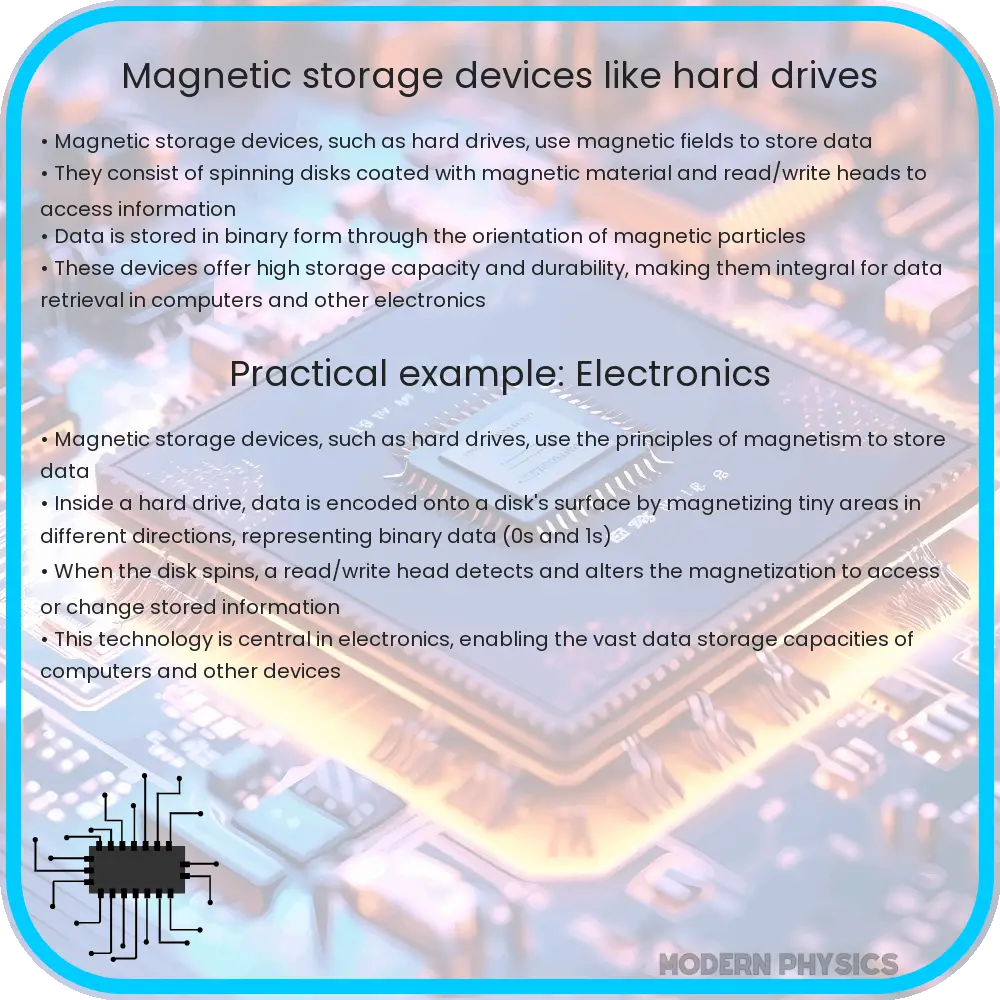Explore the durability, capacity, and speed of magnetic storage devices like HDDs, showcasing advancements and practical applications in data storage.

Magnetic Storage Devices: An Overview
Magnetic storage devices have been a cornerstone of data storage technology for decades. These devices utilize magnetic storage principles to record data on magnetic media. Common examples include hard disk drives (HDDs), floppy disks, and magnetic tape. Each type offers unique advantages in durability, capacity, and speed, making them suitable for various applications in computing and data archiving.
Durability
Durability is a critical factor when considering storage solutions. Magnetic storage devices are known for their robustness. Hard drives, with their protective casing and magnetic recording surface, can withstand moderate physical shocks and environmental conditions. However, they are not immune to wear and tear, especially the mechanical parts, which can fail over time. Regular backups and proper handling can extend the lifespan of these devices significantly.
Capacity
The storage capacity of magnetic devices has seen exponential growth over the years. Modern hard drives can store several terabytes (TB) of data in a compact form factor. This capacity expansion is primarily due to advancements in magnetic recording technologies, such as perpendicular magnetic recording (PMR) and shingled magnetic recording (SMR), which allow for denser packing of data bits on the disk surface.
Speed
Speed is another vital attribute, encompassing both the read and write rates of the device. HDDs generally offer reasonable speeds sufficient for everyday computing tasks and data retrieval needs. Speed varies across different models and generations, with newer drives featuring improved data transfer rates thanks to advancements in the underlying technology and interface standards like SATA and NVMe. Nonetheless, while HDDs are suitable for bulk storage, they are typically outperformed by solid-state drives (SSDs) in terms of speed.
- Durability: Magnetic storage devices are robust but require careful handling to prevent data loss.
- Capacity: Advancements in technology have significantly increased the storage capacity of magnetic devices.
- Speed: While generally not as fast as SSDs, modern HDDs provide adequate speed for many applications.
Maintenance and Data Recovery
Maintenance plays a crucial role in the longevity and reliability of magnetic storage devices. Regular defragmentation of hard disk drives, for instance, can improve performance and extend the device’s lifespan. Additionally, operating within optimal temperature ranges and using uninterruptible power supplies (UPS) can protect devices from environmental stress and power surges, respectively.
Data recovery is another important aspect to consider. Despite the durability of magnetic storage, data loss can occur due to hardware failure, software issues, or human error. Fortunately, specialized data recovery services and software can often retrieve lost or damaged data from magnetic media, although success rates and costs can vary.
Future Perspectives
The future of magnetic storage devices, particularly hard disk drives, is intertwined with the evolving landscape of data storage needs. As cloud storage and solid-state drives become more prevalent, the role of magnetic storage is shifting towards archival and backup solutions where high capacity and cost-effectiveness are paramount. Moreover, innovations in magnetic media, like Heat-Assisted Magnetic Recording (HAMR) and Microwave-Assisted Magnetic Recording (MAMR), promise to further enhance the capacity and efficiency of HDDs, ensuring their relevance in the data storage ecosystem for years to come.
Conclusion
Magnetic storage devices have been instrumental in the evolution of digital storage, offering a balance of durability, capacity, and speed that meets a wide range of data storage requirements. While newer technologies like SSDs and cloud storage present compelling alternatives, magnetic storage remains a viable and cost-effective option for high-capacity needs and long-term archiving. The ongoing advancements in magnetic recording technology continue to solidify its position in the storage hierarchy, ensuring its utility and relevance in the digital age. As we move forward, the blend of traditional and emerging storage solutions will likely provide a more diversified and resilient data storage infrastructure, catering to the ever-growing and evolving demands of the digital world.
